Summer Peach Kombucha with Mint
Summer Peach kombucha, made with peach preserves or juice, a splash of lemon, and fresh mint, is the perfect combination of refreshing and revitalizing. Peaches are naturally rich in vitamins A and C and antioxidants that help combat oxidative stress and support healthy skin. Adding lemon juice provides a bright boost of vitamin C and aids digestion, while fresh mint offers cooling properties perfect for summer. Combined with kombucha’s live probiotics, this flavor pairing promotes gut health, hydration, and overall summer wellness.
This kombucha flavor is a seasonal favorite, thanks to its juicy, ripe peach taste, a zesty citrus twist, and refreshing herbal notes from mint. The second fermentation enhances the sweetness of the fruit while balancing it with gentle acidity and effervescence. It’s a light, uplifting booch with vibrant fizz, perfect for sipping on hot days or serving over ice with a sprig of mint for an extra burst of refreshment.

Three Ways to Make This Peach Kombucha
Peach is one of the most delicious and crowd-pleasing flavors you can infuse into kombucha, especially during summer.
And I have some good news for you. You can make this recipe in multiple ways, depending on what season it is and what you have access to. Here are my go-to methods for adding tons of natural peach flavor to kombucha secondary fermentation:
- Peach Jam or Preserves: Peach jam or preserves are a fantastic way to flavor kombucha, especially if you’ve done summer canning and have a stash of homemade jars. They’re shelf-stable, flavorful, and easy to mix summer stone-fruit flavor into your booch even in the winter. Dissolve or blend about ½ cup of jam or preserves in 2 cups of water to create a pourable “juice,” then add that into your second ferment. This method works beautifully when peaches aren’t in season, giving rich, cooked-peach flavor in your kombucha.
- Fresh Peach Juice: Using fresh, in-season peaches is one of the best ways to flavor kombucha with vibrant peach flavor. Choose ripe organic peaches or homegrown ones for the best taste and fewer chemical residues. Juice them with a blender or juicer, but remember that raw peach juice contains wild yeasts and bacteria from the fruit’s skin and environment. To reduce the risk of unintended fermentation or off-flavors, it’s a good idea to simmer the juice for a few minutes and let it cool before adding it to your kombucha.
- Store-Bought Peach Juice: Shelf-stable peach juice can be convenient, especially when peaches aren’t in season. Look for 100% juice with no added sugars or preservatives. Pure peach juice is hard to find—most store-bought peach juices are juice blends, often mixed with apple, white grape, or pear juice. These blends still work well, but the final flavor will be more subtle and less peach-forward than fresh juice or jam.

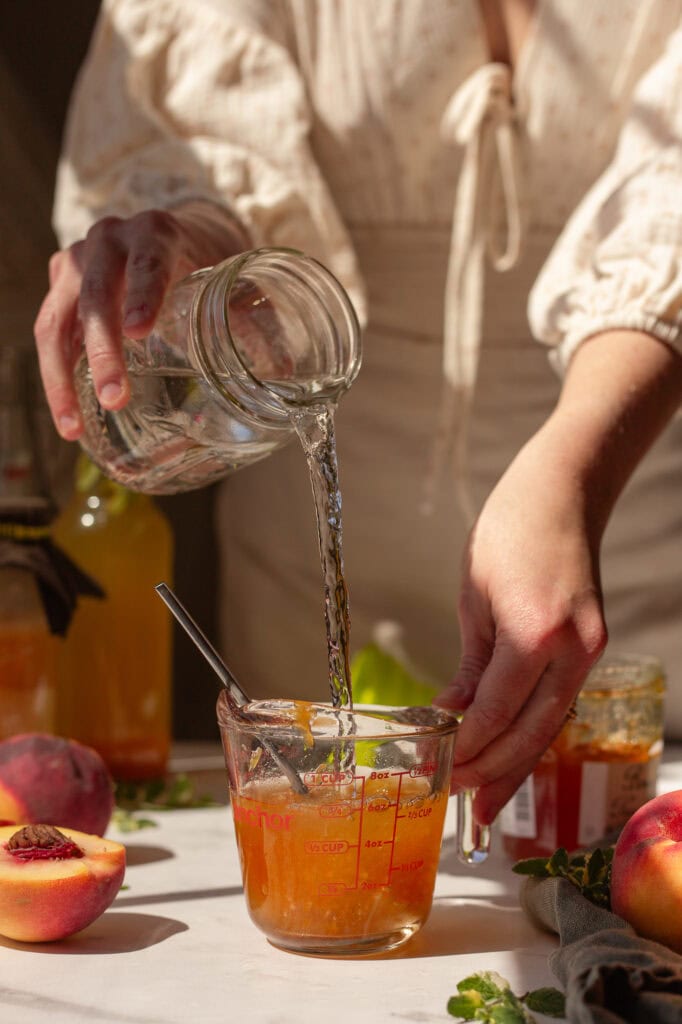
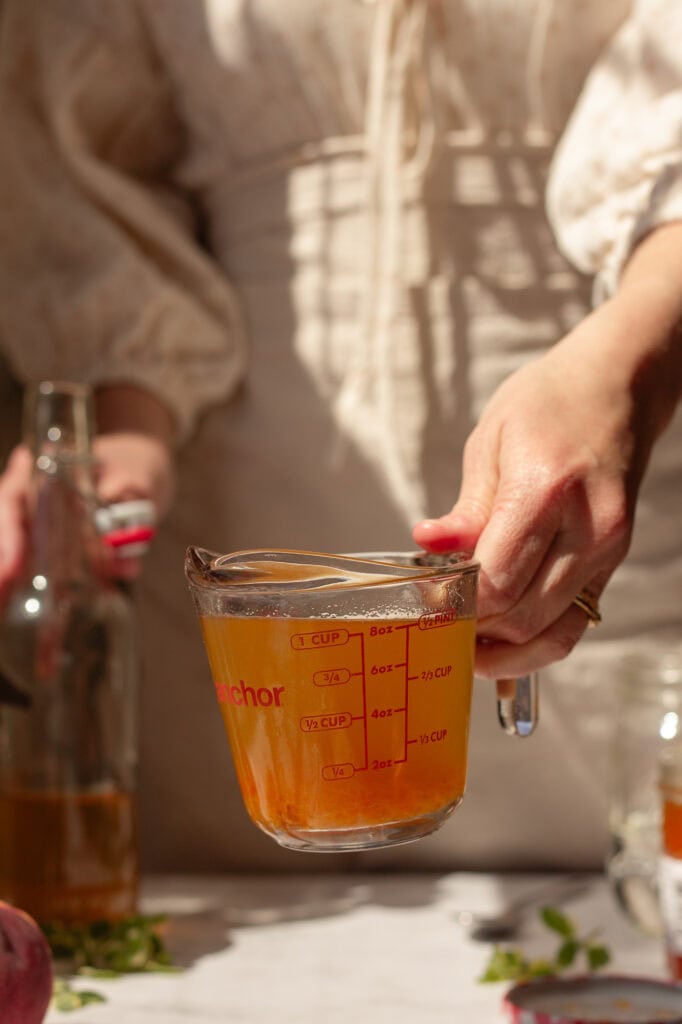
What is Kombucha Secondary Fermentation
Secondary fermentation is when kombucha transforms from tangy fermented tea into a fizzy, flavorful probiotic drink. First, once the initial fermentation is complete, you remove the SCOBY and transfer the fermented tea into carbonation-safe bottles. Then, you add a little sugar (usually fruit juice). This added sugar feeds the remaining yeast and bacteria, triggering a second round of fermentation inside the sealed bottles.
As the yeast consumes the sugars, it produces natural carbonation, creating the satisfying effervescence kombucha is known for. Beyond just adding fizz, secondary fermentation is also where kombucha develops deeper, more complex flavors. The additional fermentation time allows the ingredients (fruit juice, herbs, or spices) to infuse into the tea, balancing its acidity and enhancing its taste. This process also continues to enrich the probiotic content, making kombucha more enjoyable to drink and even more beneficial for gut health.
Secondary fermentation results in a bubbly, flavorful booch packed with beneficial microbes and nutrients, without artificial carbonation or sweeteners.
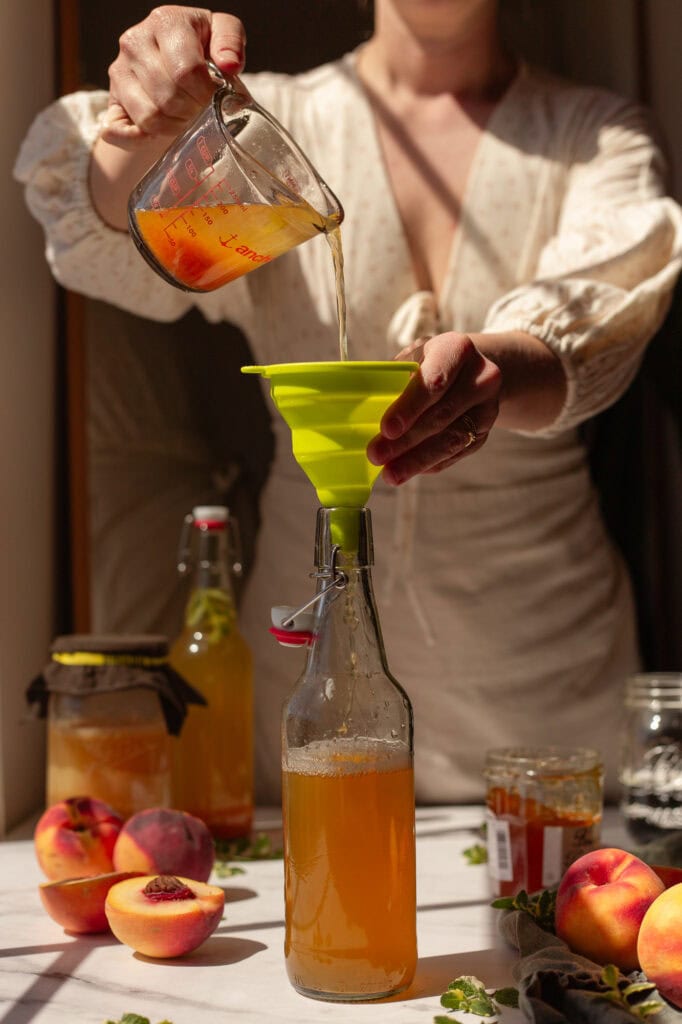
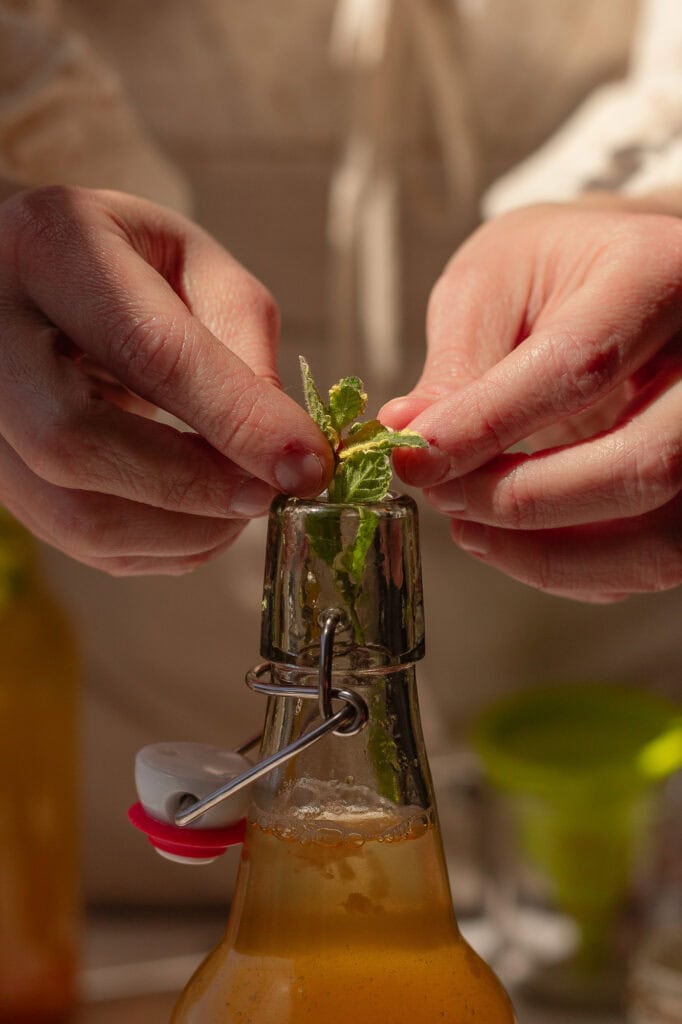
Kombucha Fermentation Supplies


What is the best ratio of fruit juice to kombucha?
The juice ratio is slightly adjustable. The best ratio for lower sugar is 3 parts kombucha and 1 part juice. For slightly sweeter, as with this recipe, I do half kombucha half juice.
Is Peach Kombucha Alcoholic?
Yes and no. Like all kombucha, Peach kombucha naturally contains a trace amount of alcohol due to the natural mixed fermentation. Most homemade and store-bought kombucha contains less than 0.5% alcohol by volume, classifying it as non-alcoholic. However, alcohol levels can vary slightly depending on how long it ferments and the sugar content of added ingredients like peach juice or preserves.
Less sugar in secondary fermentation means less alcohol.
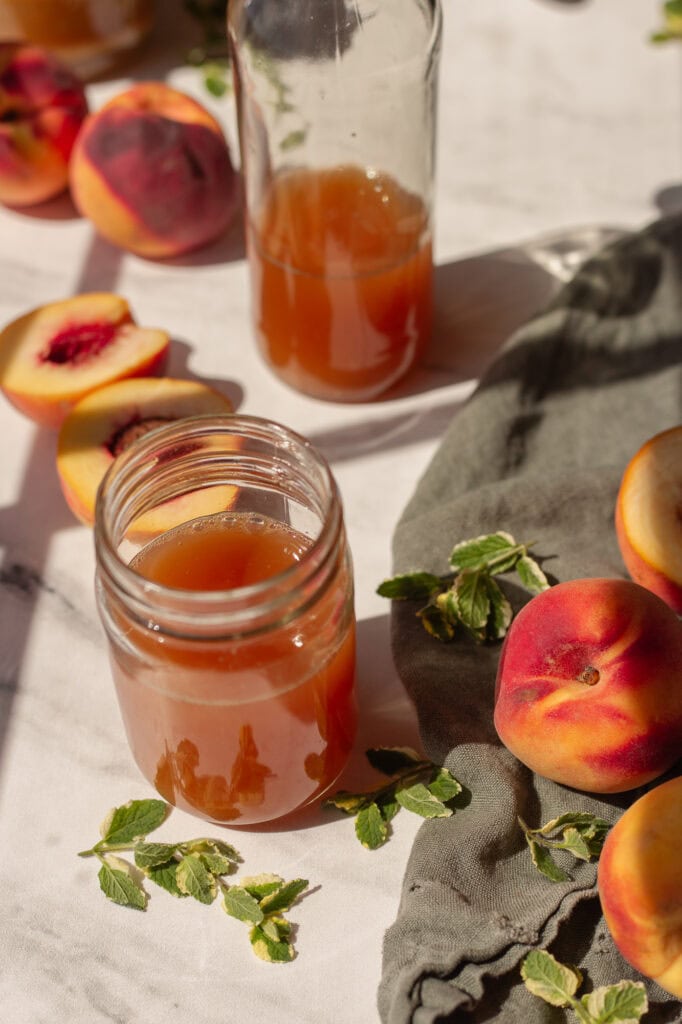
Summer Peach Kombucha with Lemon and Mint
This sweet summer pomegranate and peach kombucha is the perfect refreshing drink for summer. This pomegranate peach kombucha recipe is for a second fermentation flavoring and carbonation.
- Prep: 5 minutes
- Total Time: 120 hours 5 minutes
Ingredients
- about 3 cups fermented sweet tea from primary fermentation
- 1/2 cup peach preserves blended in 2 cups water*
- 1 cup lemon juice
- 3 fresh mint sprigs
Instructions
- It is vital that you use carbonation safe bottles for secondary fermentation. This recipe makes 6 cups, so I use three 16-ounce bottles. See notes on different peach juice and peach flavor options.
- Combine the lemon juice and peach mix/juice.
- Fill a carbonation safe bottle about 1/2 full with fermented sweet tea from primary fermentation.
- Top off the bottle with the juice mixture so there is about an inch of headspace left in the bottle.
- Rinse the mint sprigs well and add one to each bottle.
- Secure the bottle lid and gently invert it a couple times to mix.
- Allow it to ferment at room temperature (70-80 degrees F) for about 4 to 5 Days.
- Carefully open the lid to see if it is carbonated to your liking. If it is, refrigerate it. If not, continue to ferment for a few more days, carefully checking the carbonation again. Depending on the conditions, it can sometimes take 12-14 days to carbonate.
- Keep refrigerated.
Notes
- Peach juice options include: fresh pressed peach juice, bottled store-bought peach juice, or 1/2 cup peach preserves dissolved in 2 cups of water.
- If using fresh pressed juice I suggest heating it to 145° F for a few minutes then cooling before using. This ensures no wild microbes get introduced into the kombucha.
- The juice ratio is slightly adjustable. The best ratio for lower sugar is 3 parts kombucha and 1 part flavoring juice. For slightly sweeter, as with this recipe, I do half kombucha half juice mix.
- Sub the lemon juice for pomegranate juice for another fun flavor combo.



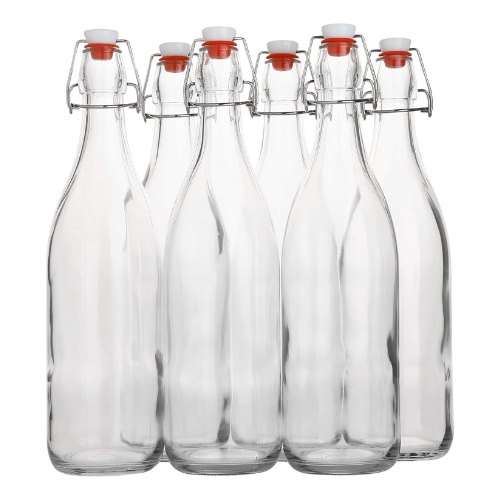
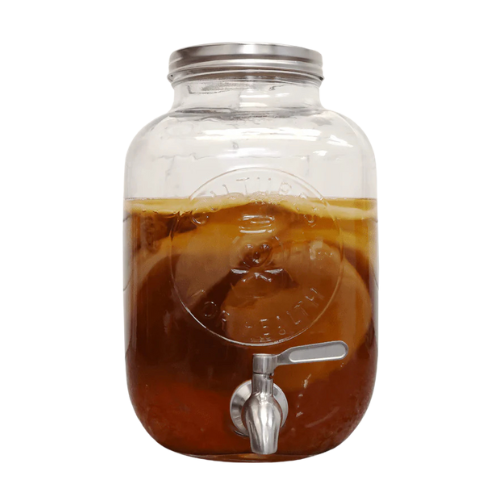
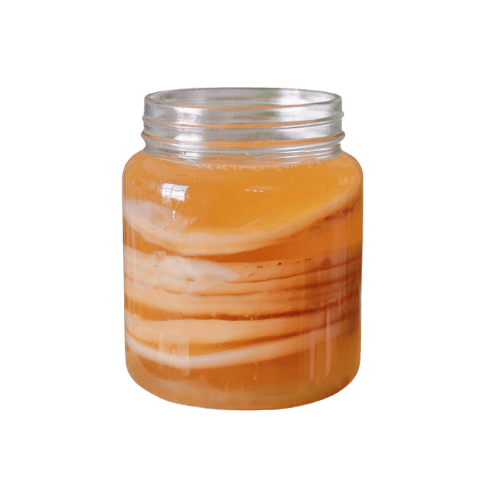
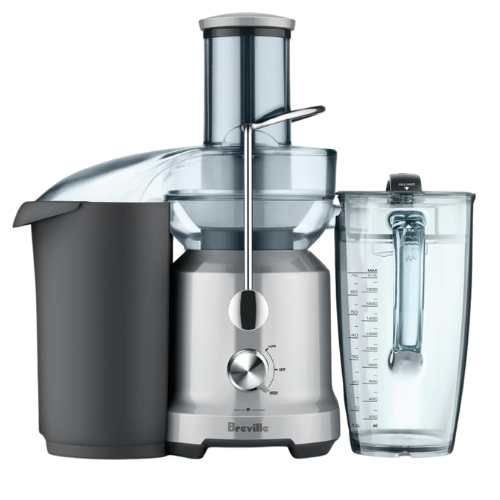
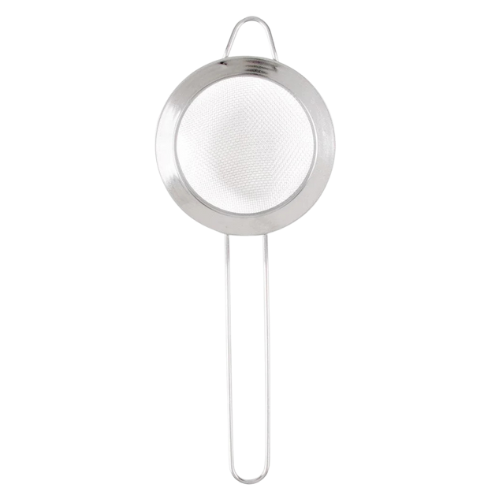
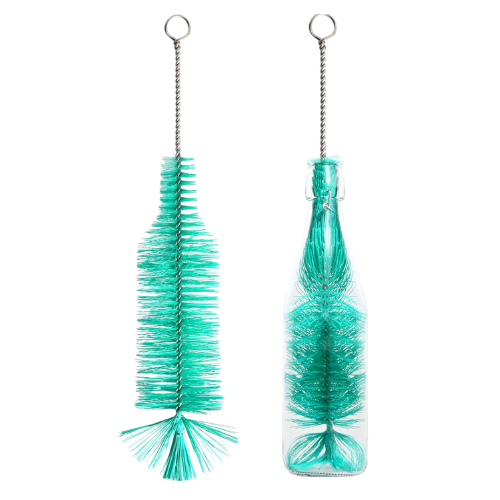

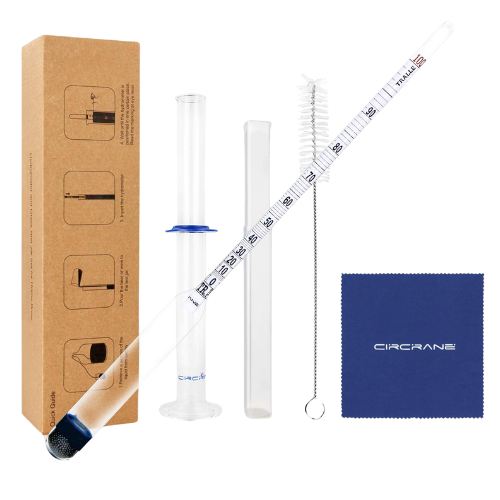


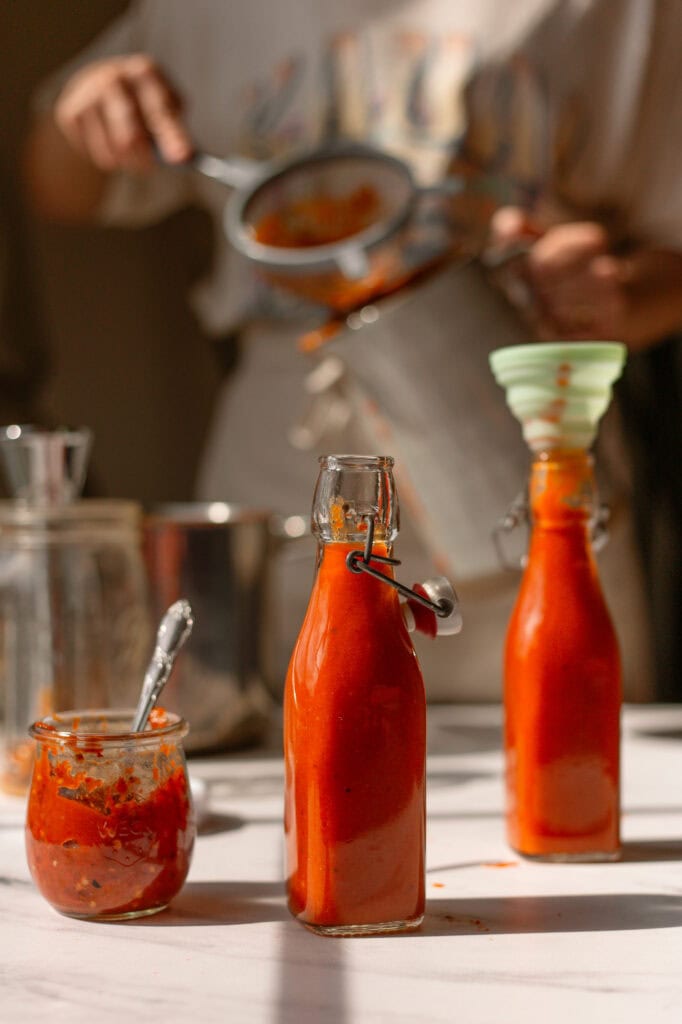





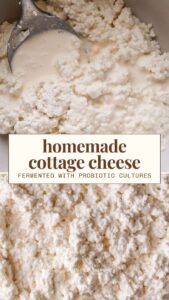

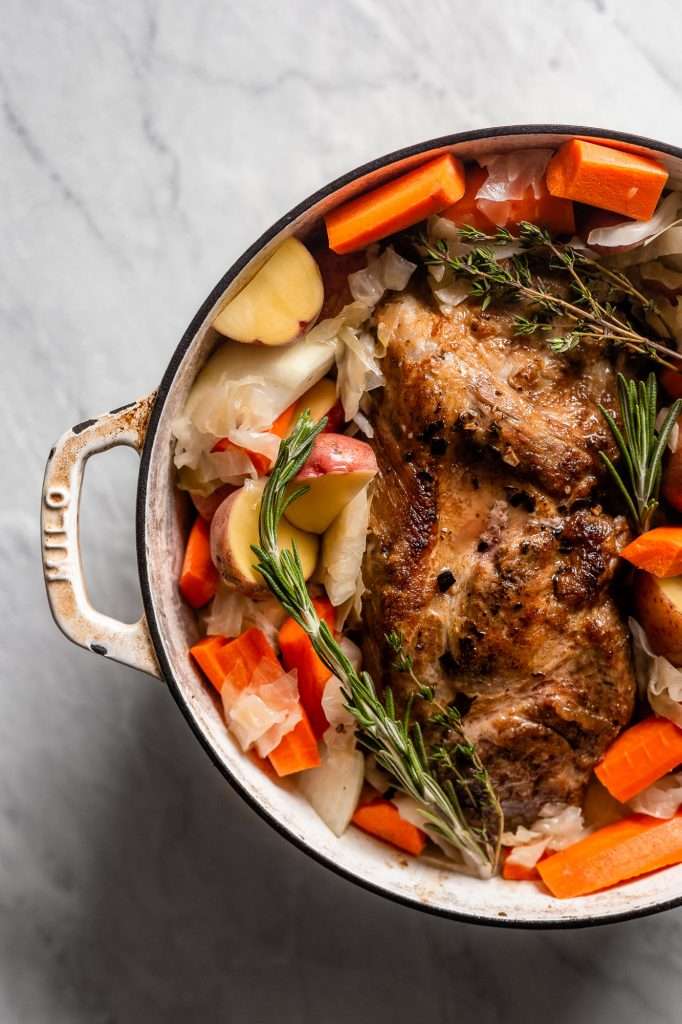
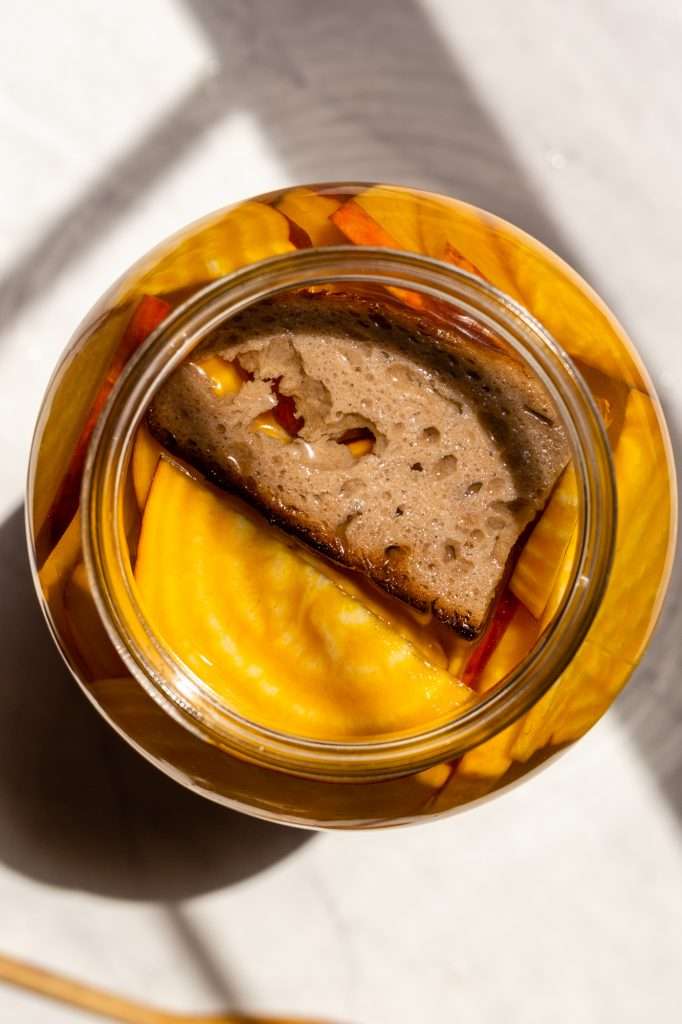


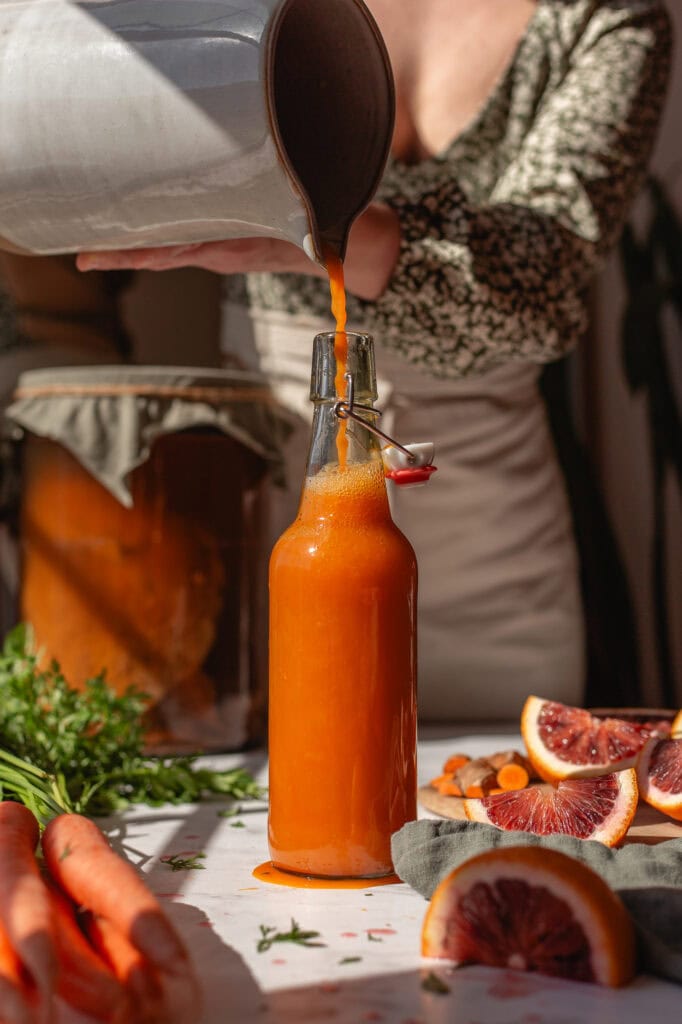

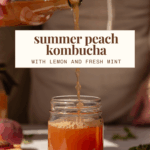
I wonder if it is possible to end up with an alcohol content and how much?
It is. It has to do with the total % concentration of sugar. This is something I teach in our online course The Fermented Drinks Semester.
I just did my first batch of kombucha – second fermentation of pomegranate (and ginger – didn’t have peaches). There’s some floating “stuff” near top of bottles – is this another scoby or ?
I’d like to add a picture but not sure how…
yes, that’s probably just some SCOBY microbes trying to make a new one.
The flavor was great tho a bit vinegary. I think I left the first fermentation too long? Any suggestions?
yes leaving the first fermentation too long will cause that.
Looks and sounds amazing! How long can it remain in the fridge after both fermentation rounds? Does it need to be burped occasionally in the fridge?
It should be good in the fridge for a few months or more. You may want to burp it in the fridge every other week or so. But it should be fine as long as you are using pressure-safe bottles.
Hi Kaitlyn! My kombucha is in the second round of fermenting as I type this out. It’s been 6 days and the drink is still not fizzy.. any idea why? Should I just not expect it to carbonate at this point and just put in the fridge?
Everyone’s kombucha cultures and home fermentation conditions are unique! It likely just needs a little more time. If your primary ferment is a bit more acidic or your home is cooler than mine, for instance, it can take longer to carbonate. How often are you opening the bottle to check?
Could you explain abit more about the fermented sweet tea. How do I make this or what’s the alternative.
It’s kombucha primary ferment! flavored and carbonated kombucha is a two part process. First you ferment sweet tea with SCOBY. Second, you flavor and bottle the fermented sweet tea (like in this recipe).